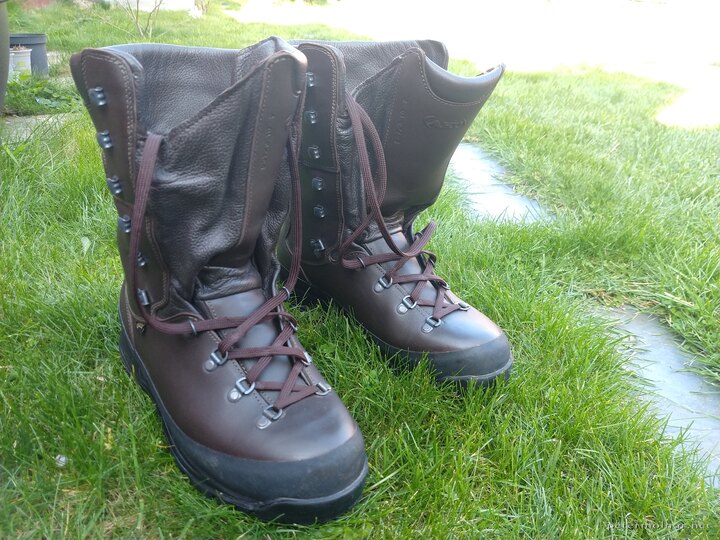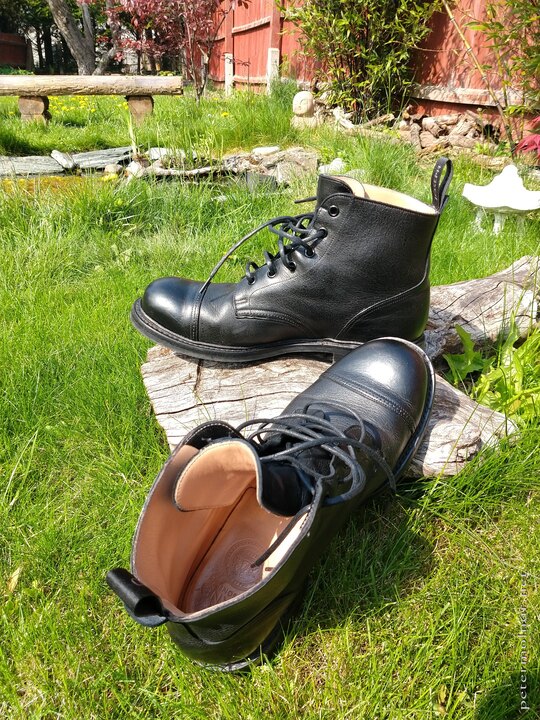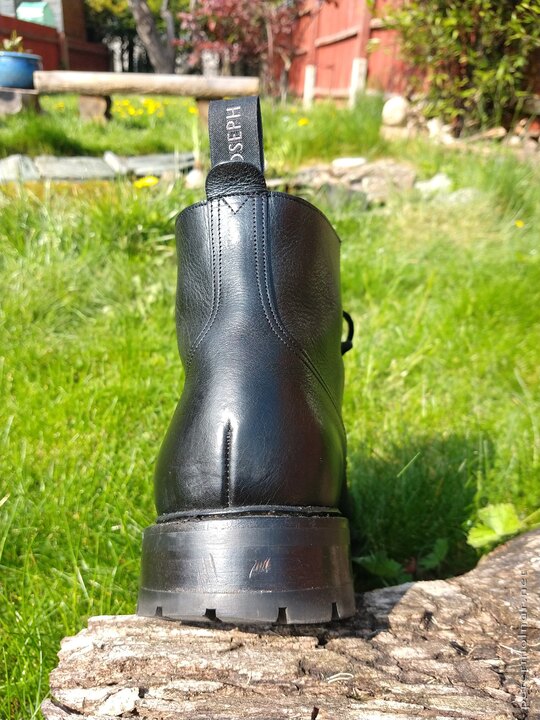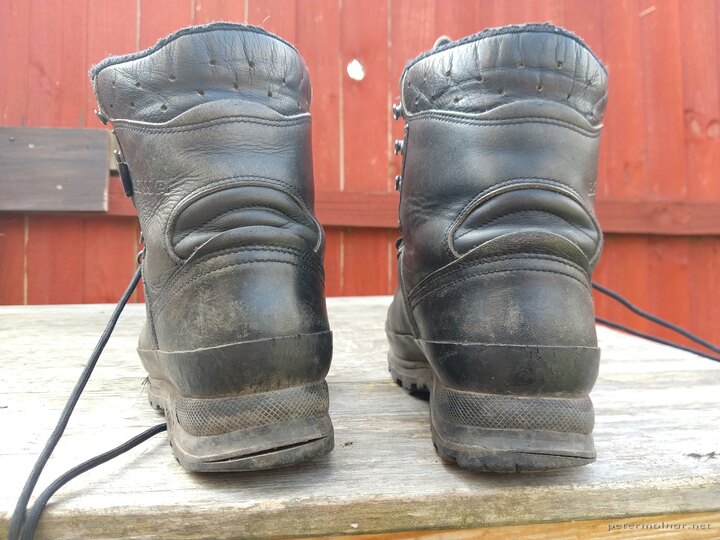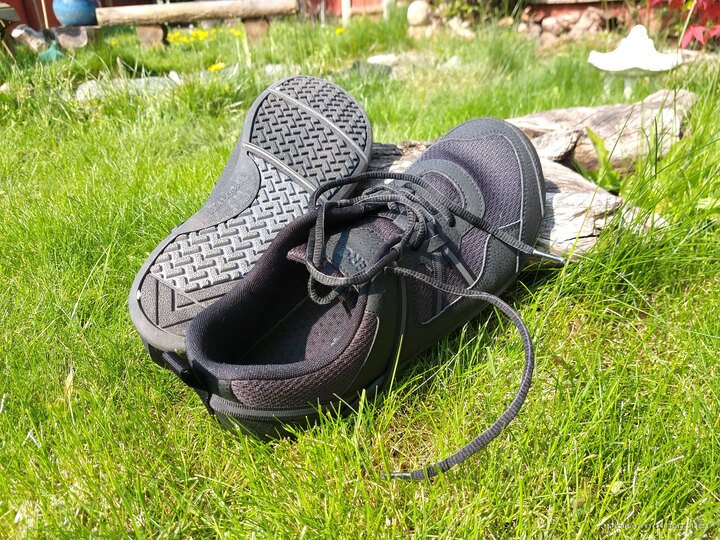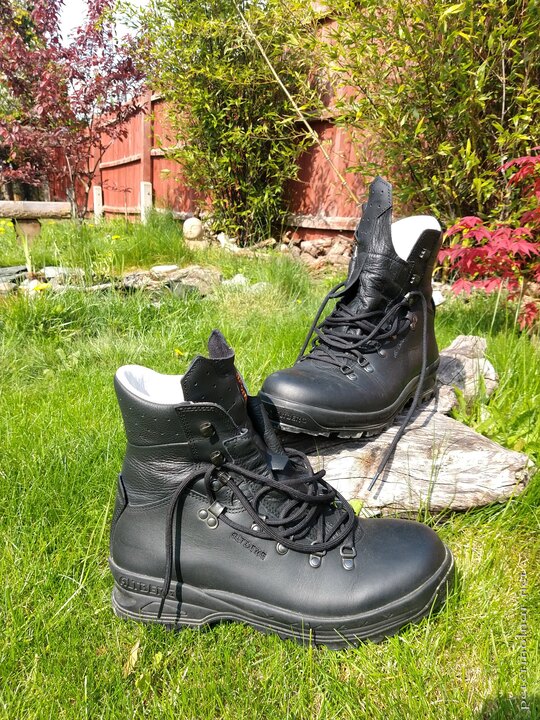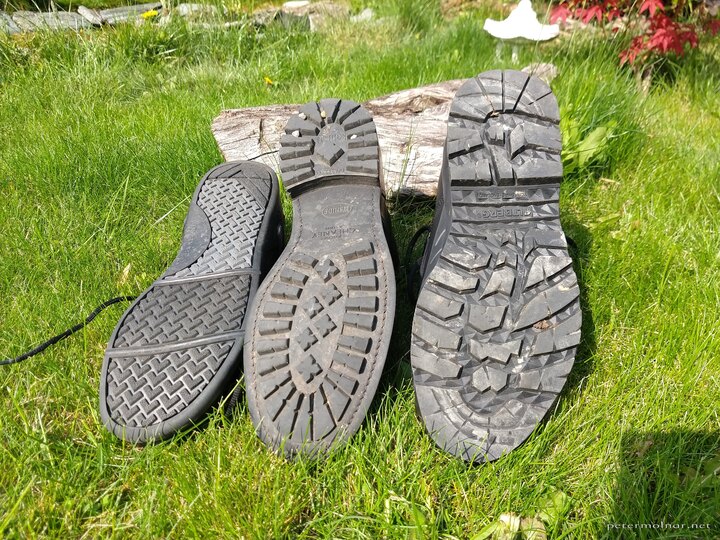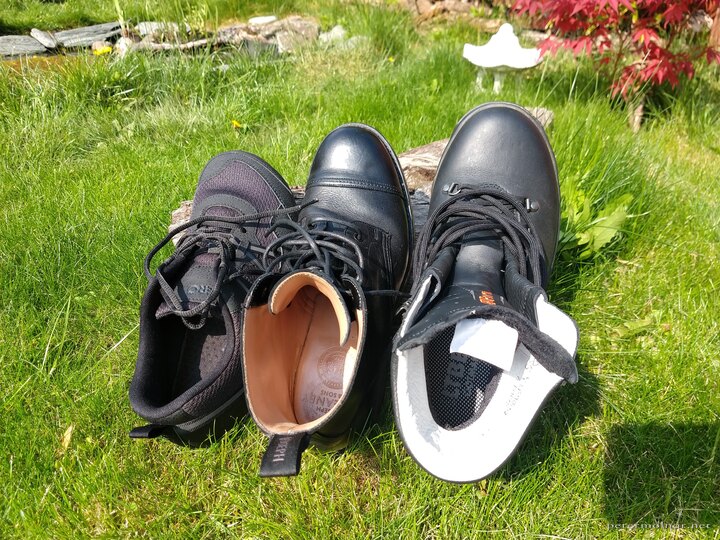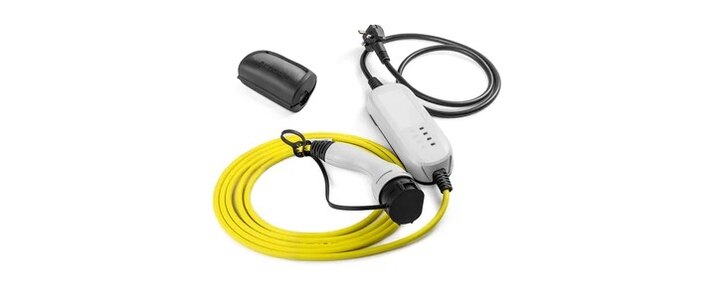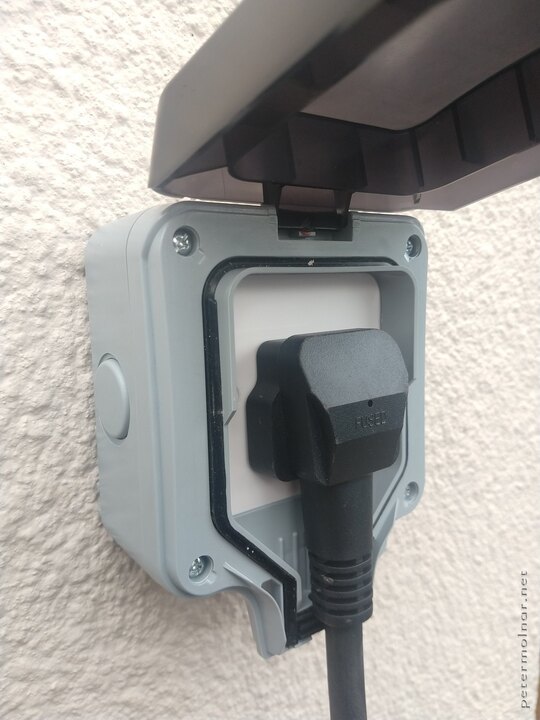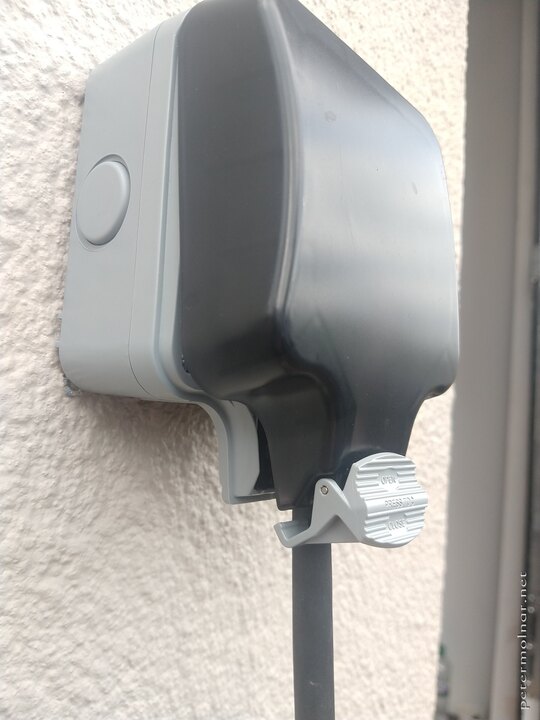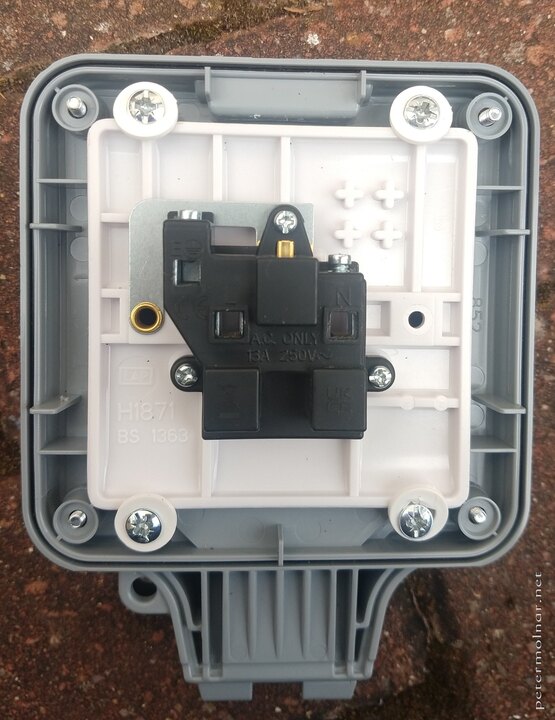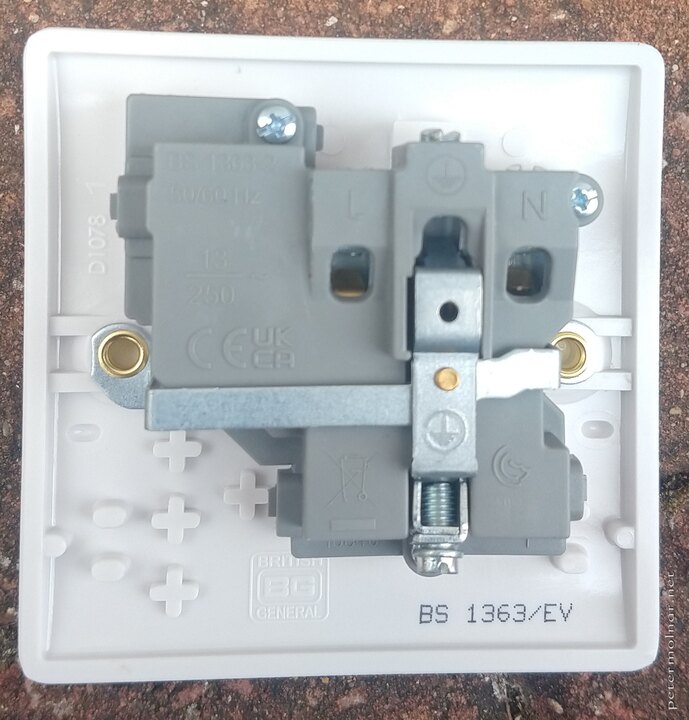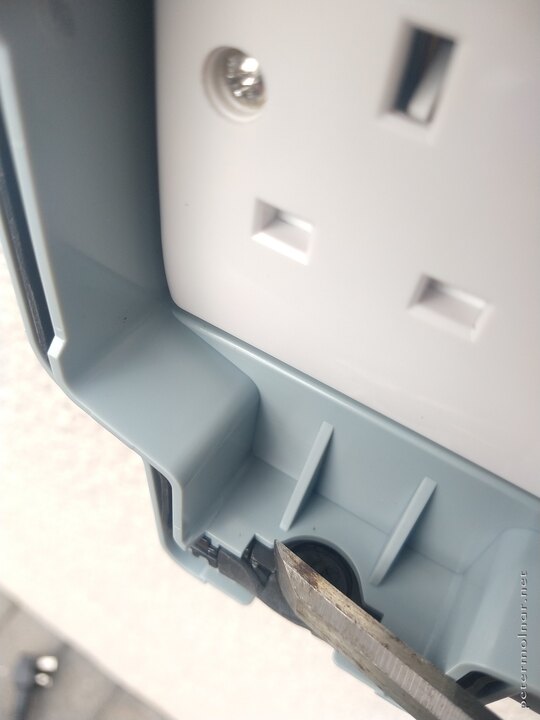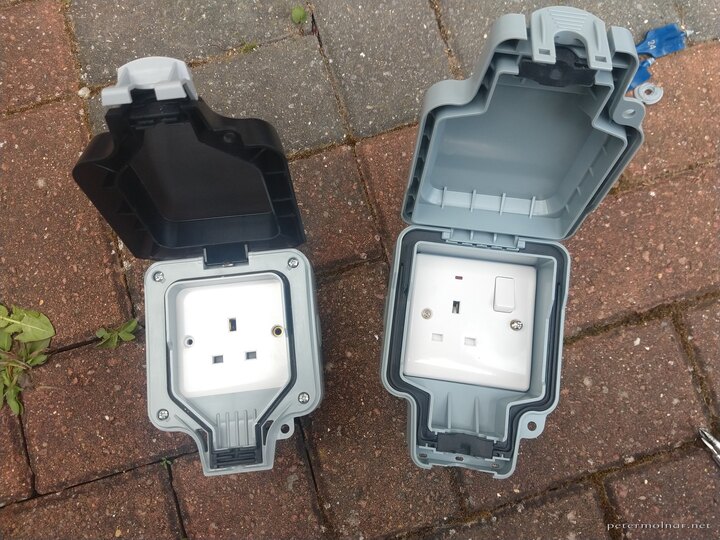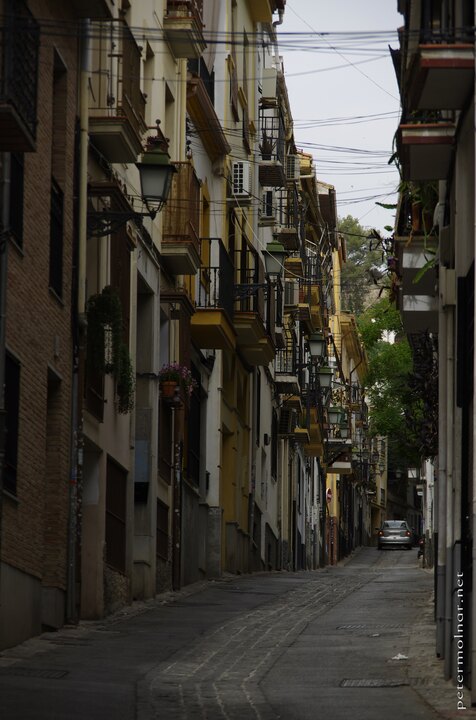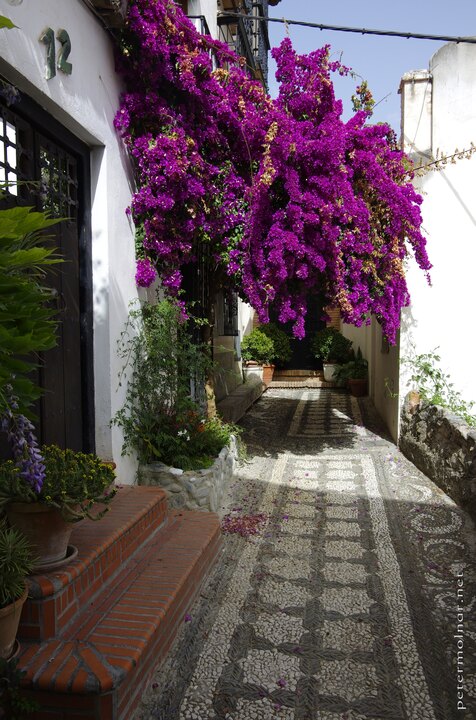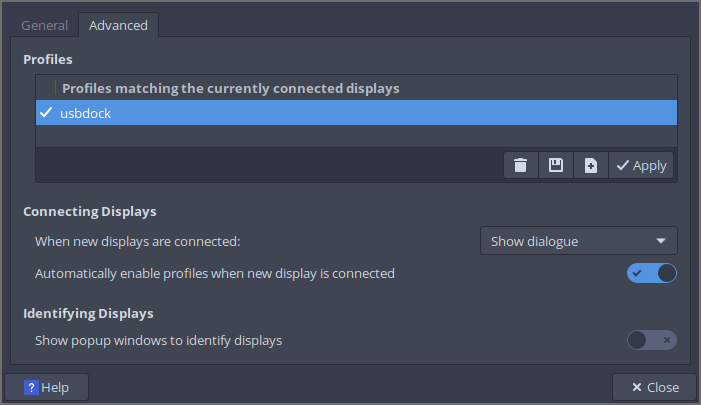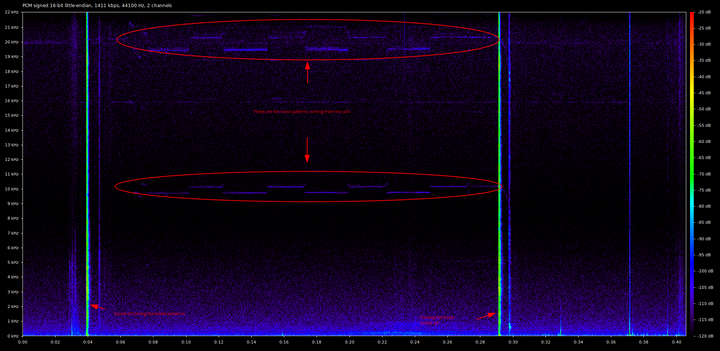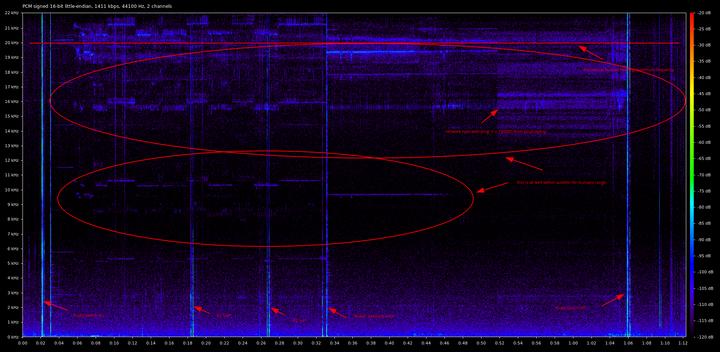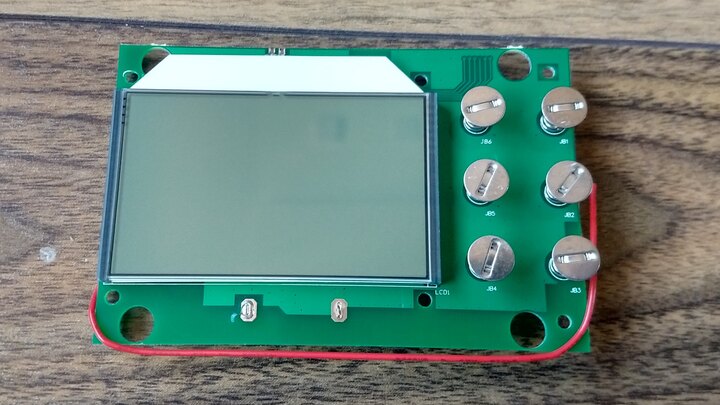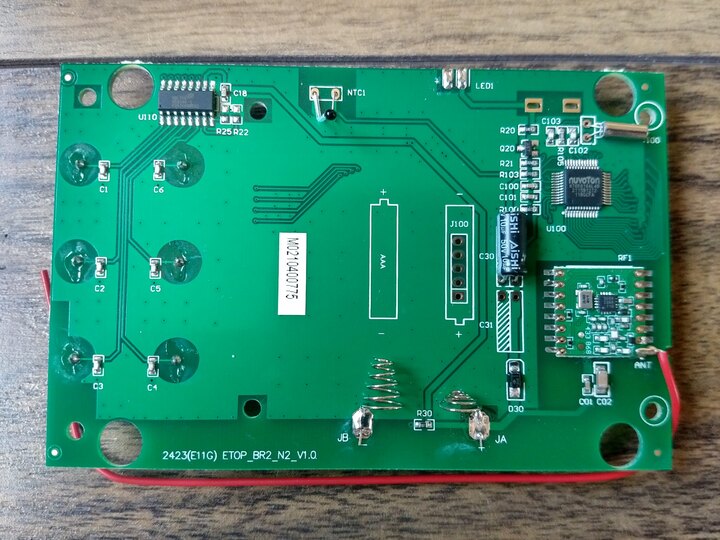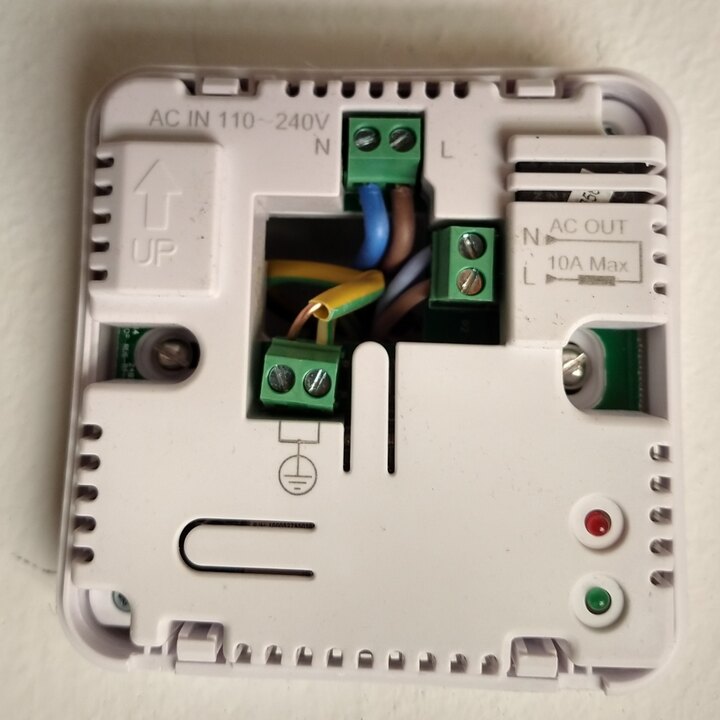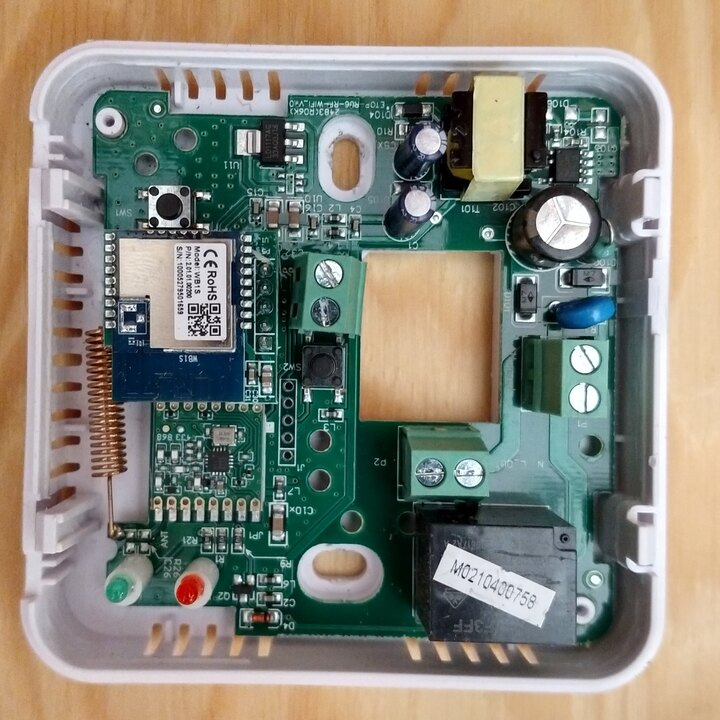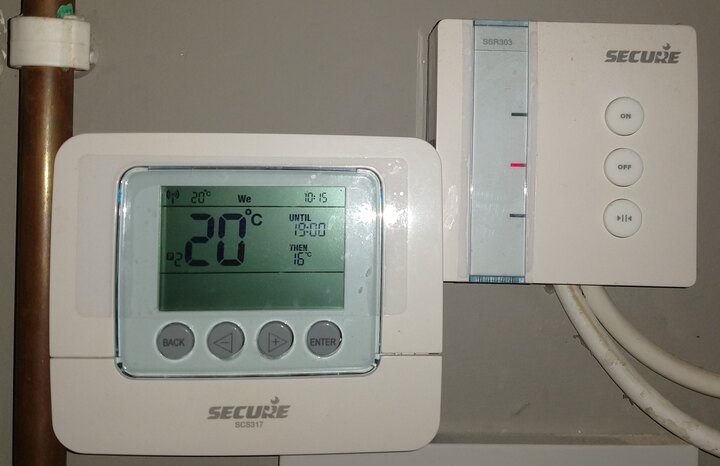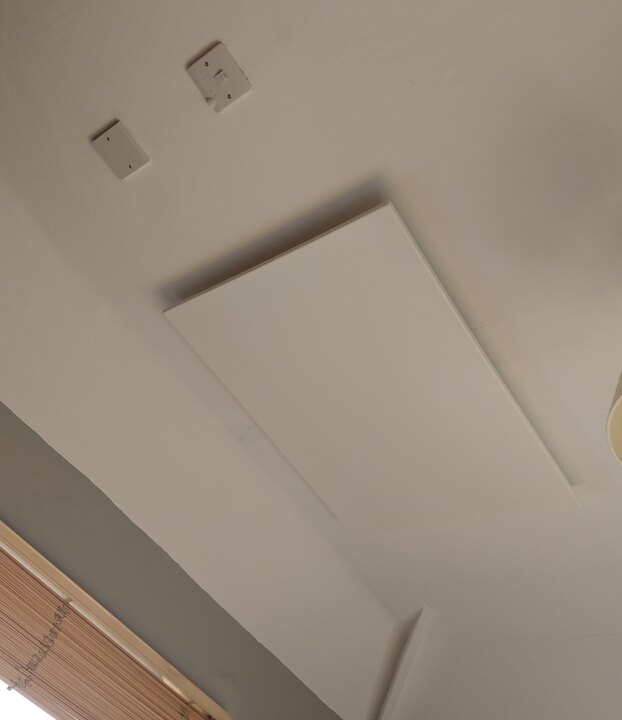The tiny office, the compact cassettes, and the speaker upgrades
My tiny home office desk
At the end of 2019 we moved into THE average UK house: the mythical semi-detached, as a friend referred to it. He was brought up in Bath, which, apparently, lacks these omnipresent dwellings, so when he moved out from there and was presented with them - as these were often mentioned as the national average - he greeted them as a beast of myths and legends.
It's a mid 50s Laing Easiform, one of the non traditional constructions - concrete in the UK is non-traditional, given a meagre 100 years of these being built doesn't add up to tradition yet - that was not deemed faulty in the '85 incursion into prefab houses. Possibly because it's not prefab1.
Saying that this house is 3 bedroom is overselling it a bit: there are two large-ish bedrooms, and one ~2.4x2.4m, which became my office and our guest room. Because of this, my desk is rather cramped: it's whole 25 + 80 cm wide, 80cm deep, a now discontinued IKEA Ivar drop down desk, so it can be closed when the room acts as a guest bedroom. I'd definitely love a stereotypical hacker basement2 but I'll work with what I have.

In 2020, when the world was told to stay at home, we bought floorstanding speakers to bring a bit more of the world home. The Panasonic micro bookshelf speakers, SB-PM500 that I got for about £20 when we moved to the UK in 2012 moved up with me. I tried to play with their placement, but you can see, there aren't many good options. I was driving them with a £15 class-D micro amp, a ZK-502T.

Sidenote: for me, it seems like that with cheap class-D amps one needs a lot of luck with speaker pairing. As I wrote before3 moving from a Topping MX3 to a NAD C 316BEE V2, which is still a budget amp, for the Dali Oberon 5 pair we have was an insane difference. Maybe higher end class-D is good, but in my very limited experience, the cheap ones are prone to speaker pairing, so consider getting a used AB class amplifier instead.
Another sidenote: some years ago I had the chance to bring my beloved-as-teen speakers from home - just the speakers, as the CD player of the base unit was dead already (SA-AK18). Since then I learnt the phrase "black plastic crap4" - and once I heard those old, space-grey, futuristic speakers against the small ones, I understood why the term. The smaller ones were better in every possible way, and I ended up donating the old ones. The lesson here: looks are deceiving for an untrained eye, especially for young, untrained eyes.

Ever since the Oberons I've been after better speakers for this small, limited, super near field listening space (LOL) for years. I think what was holding me back was knowing that the amp not up to driving real speakers so I kept putting the topic off.
I was very close to buying and AudioEngine A1, tiny, active pair, that's discontinued now. Not the A2 - the A1 still had the power supply in the box, as I'm getting very tired of external power bricks. It turned out: the A1 doesn't have grills, which is a must with a 3.5 year old in the house. The longer he doesn't know there's something behind the cover, the better. I also started reading up on the Adam Audio D3V, but the inner voice was telling me I wouldn't like them. And it also has a power brick.
Recently, however, things got shaken up a bit because of a box of cassettes.
The Revenge of the Box of Compact Cassettes
We were back at home in Hungary recently, where my father keeps giving me my own boxes filled with my own things that I still have at their place.
It's entirely valid, but it's not always simple to move my things via commercial airplanes: to make it worth it I need to pack an extra, exactly 20kg luggage. This time I managed, and I ended up with a large set of cassettes - which are apparently making a comeback to mainstream media?!

To at least have some vague idea what's on them I also brought my Panasonic walkman and my Aiwa dictaphone - both dead.
The Panasonic needed new belts: they were just crumbles at this point. It was playing too slow, but this was a relatively easy fix, though not measured yet, as I don't have an oscilloscope.

Regardless, it's left channel is partially dead, possibly a head alignment problem, and I couldn't yet get to it.
The Aiwa looks full on dead, and it's not the belts. One day I'll start working on it. Hopefully.
So I bought a cassette deck
To overcome the problem of not having something to play the cassettes with, and because I never had a proper one, I started I looking on eBay for a cassette deck. I ended up bidding on a whole stack of JVC: receiver, phono, tape deck, and ITT speakers, and I won them - for £13.38 the whole, with a 20 minutes driving. And with the promise of "it worked when I put it away".
When people tell you to be really aware of thing sold as "it worked when I put it away" you should listen - unless you know how to or want to learn how to fix things, like me.
The cigarette home smell from the equipment was ruthless. I let them air for some days, didn't work. I bought some Neutradol spray, sprayed them let them air many more days, that finally did the job, but they still puff occasionally. This is despite the fact that they are basically spotless: barely any dust or anything. Way too many people smoked in their back in the 'olden days, and it just soaked into everything.
The JVC KD-A115 Stereo Cassette Deck is gorgeous. It has VU meters, large, physical buttons. It's not high end, as it's a 2 head system, but it's already much more complicated mechanically, than I was expecting it to be.

Nearly everything works, except fast forward. Unfortunately it doesn't seems to be a belt issue, so my desire to learn how to repair these things will soon come true - once I find the time. Does anyone have time for sale?
It sounds absolutely amazing compared to what I remembered about the sound of cassettes. Not my old recordings from VIVA through the TV, recorded by another black plastic crap system; those are miserable compared to streaming, or even against low quality mp3-s. But the genuine, store bought ones, those are actually quite nice, so I'm not entirely stunned about their comeback. I could even do a decent recording on a Type IV (metal) tape as a test.



But I also bought a turntable?
Because it was the full stack from 1980, it had turntable. I was told that the JVC L-A116 got a new belt, and that it's fixed now. Well... no.
The belt was indeed replaced, but that was far from the only problem:
- completely, rock solid stuck spindle
- warped and twisted stylus
- misaligned cartridge
Now the rest is also fixed - thanks to @12voltvids on youtube7 for the idea to heat the spindle to pull it apart, though it did take a frightening amount of heating from a heat gun. Unfortunately I scratched it with the pliers despite the layers of cloth between them, but I was able to polish it out in the end.
I bought a new stylus that fits the original cartridge8, aligned the cartridge, configured the counterweight. I now have a working phono - without vinyls, because I bought the stack for the cassette deck.
So in order to be able to at least test it bought a Vivaldi: Four Seasons for a whole £1 in a charity shop - and I was overjoyed with the sound. Seems like there's definitely a lot of truth about old mastering quality, because that Vivaldi recording from the 70s packs some unbelievable detail compared to super-duper hi-res quality whatever in the streaming services.
For anyone wondering, it's connected to the NAD, it has a phono preamp. No, I'm not going to go down the cartridge rabbit hole, it's too deep, and it's for people with vinyl, which I still don't have, and I don't really intend to have - it's too expensive.

And I now have a vintage receiver?
The receiver, JVC R-S119, is mint. Apart from two dead bugs that were inside the display - cleaned now -, it's in perfect condition. No dead capacitors, barely any dust inside.
There were spots I thought are leaking capacitors, only to learn that some capacitors are glued down.
It does have a low volume, high pitched hiss, but this wasn't designed for the modern, high sensitivity, cheap speakers (see the Panasonics above) that I first hooked them up to - it could easily fry them with it's 25W. The pots and meters needed cleaning, those made a lot of cracking sound, isopropyl alcohol was my friend here. All the contact sprays contain terrible things, I'll try to stay away from them.
Sidenote: that high pitched hiss was my main issue with the Topping MX3 I used to have, and an early '80s Rotel RA-1010 which I briefly tested; both were louder, than the JVC. l The NAD doesn't have it.
Anyhow, the receiver is a beauty, and it sounds amazing for it's age.




And late '60s speakers?!
I ended up selling the ITT KS 665 speakers on eBay already - I don't have the space for them. I hope someone is going to be extremely happy, given they got it for £0.99 plus delivery.
I need to be realistic about restoring something that I need to learn how to do from scratch, considering my free time scarcity. It would be a waste to store these in the shed for a decade, only to let them rot away. Considering their age, they sounded surprisingly nice in vocal and high range, so they'd probably made acceptable studio monitors, given they are sealed cabinets, but they are hard to drive.



Different, small speakers, however...
As told in the beginning, I have been eye-ing upgrades for the Panasonics for quite a while now, but various things kept holding me back.
During the summer I went to a bar, Flakon10, in Budapest, with friends - only to be greeted with 4, very Dali-looking speakers inside. People, please, PLEASE put audiophile speakers at more venues, bars, cafés. They can deliver music at much lower volume, so people can hear each other. It's a wonderful experience. It kept bothering me because I couldn't find them in the lineup, but their appearance and sound was telling me they can't be old, and that they are for sure Dali. After some luck I found them: they were Zensor 3-s.
It's very hard to find information on discontinued lines, even if they are from 2015, when the internet was already omnipresent and in everyone's pocket, which is quite annoying. It'd be great to have a dedicated sections, corners, on manufacturer websites, that act like museums for old products. I'm also looking at you, IKEA.
When looking at Zensor 1-s, Oberon 1-s, coughing at the price of Menuet, I came across a surprise: the Dali Zensor Pico. This thing is the same size as my Panasonics!
| Width | Height | Depth | Frequency range | Sensitivity | Nominal Impedance | Weight | |
|---|---|---|---|---|---|---|---|
| Panasonic SB-PM500 | 145mm | 224mm | 197mm | 74 - 27000 Hz -10 dB | 80.5 dB/W | 6Ω | 1.9 kg |
| Dali Oberon 1 | 162mm | 274mm | 234mm | 51 - 26000 Hz +/- 3 dB | 86 dB/W | 6Ω | 4.2 kg |
| Dali Zensor 1 | 162mm | 274mm | 220mm | 53 - 26500 Hz +/- 3 dB | 86.5 dB/W | 6Ω | 4.2 kg |
| Dali Zensor Pico | 145mm | 232mm | 196mm | 62 - 26500 Hz +/- 3 dB | 84 dB/W | 6Ω | 3.08 kg |
Giving specs at -10 dB, Panasonic, sure, not cheating at all. No wonder it sounded so boxy.
I found 3 of them on eBay, and won the bid at £83 + £20 delivery - they were probably satellites in surround system.





The balls under the speakers are cheap o' juggling bean bags, which are ideal to experiment with angle, height, etc. In a ideal world, these should be lifted to head level, with stands, and set vertically - albeit the Zensor Pico was sold as a 5.1 set, with one as a center speaker, horizontally, which makes me believe that the setup is actually OK. Yes, it was called Vocal, the logo was in the middle, and the speaker terminals were horizontal, but it was the very same speaker by every other mean. One day, if I figure out how, I'll get stands.
UPDATE Speaker positioning makes a frightening difference. I put them on two, currently unused cork yoga blocks, and it would be better to get them even higher, but due to the options available, that's not yet possible (the monitor arm on the left is in the way).
They were alredy magnificent horizontal, but I have to admit, they sound better vertical. It also looks better, than the juggling balls.

I love them with the JVC now, they sound absolutely wonderful, and they fit the unforgivably small space.
Some closing thoughts
Music has been important for me as long as I can remember, much more, then equipment, but once I stopped going to loud music parties I started missing them. I tried playing guitar, but it's not for me, so I'm thankful to those who can and do play anything.
I always thought live music or at least from speakers is a whole level of different experience, then music from headphones, and a recent study1112 seem to finally back it up that resonance, music, etc reaches our cells. Obviously not limited to musical frequencies, which is probably why Chinese medicine says the food for the Pericardium Meridian is sunlight.
All of those healing with sounds things that many people think is bogus might finally be proved. Cats know this, their purr heals them, and possibly us as well. I dislike how people think of senses: one for seeing, one for hearing, etc, when, for example, our whole body feels heat, yet it's all different wavelength energy. Experiencing with our whole body should be important.
If you're like me, and can't go to parties any more, treat yourselves with some music that reaches your whole body13, not just your ears. It's important.
https://nonstandardhouse.com/laing-easiform-cast-in-situ-house/↩︎
https://petermolnar.net/article/music-center-chromecast-dlna/index.html↩︎
https://www.hifiengine.com/manual_library/jvc/kd-a11.shtml↩︎
https://scitechdaily.com/your-cells-can-hear-how-sound-waves-rewire-the-body-at-the-cellular-level/↩︎

